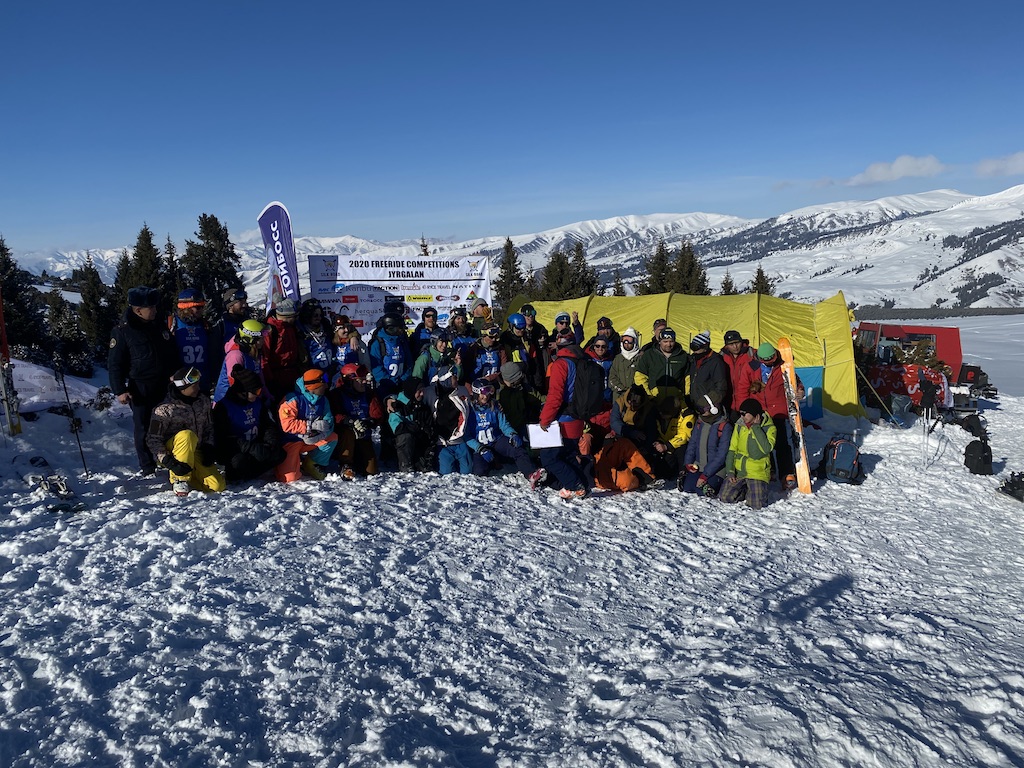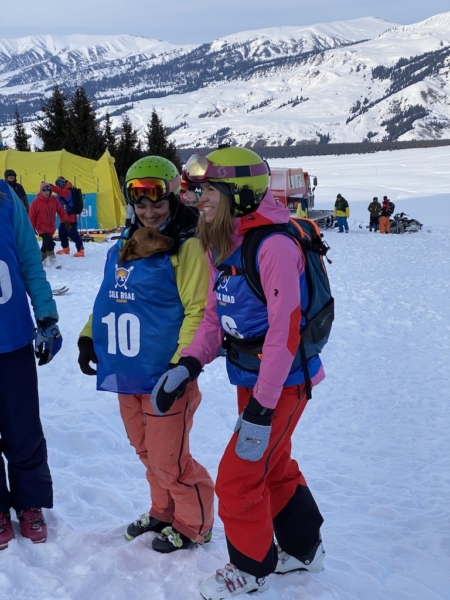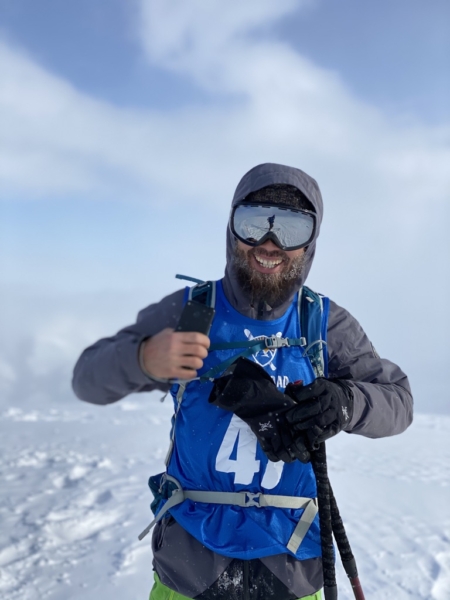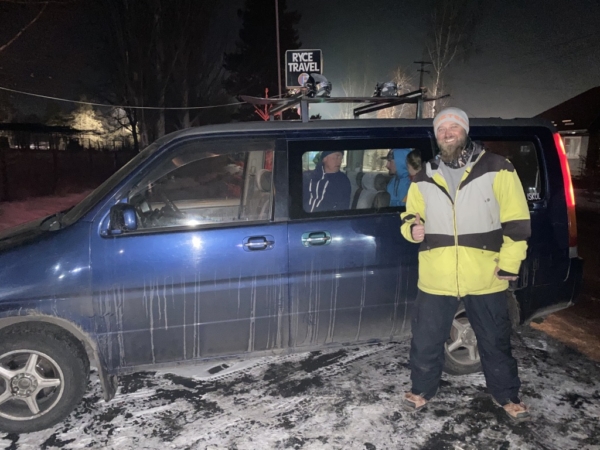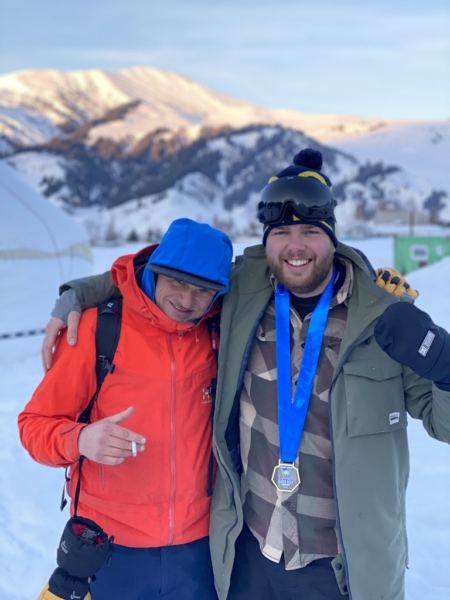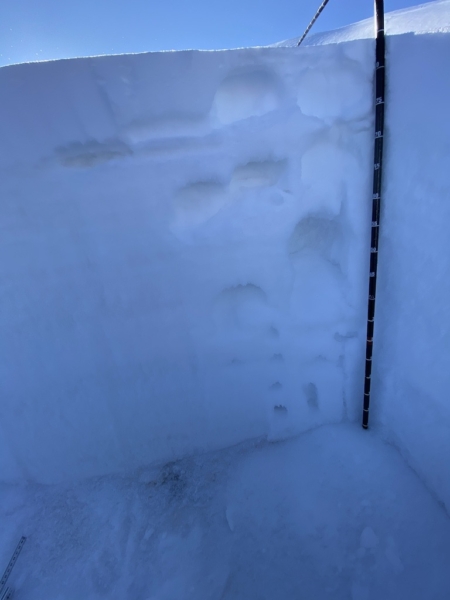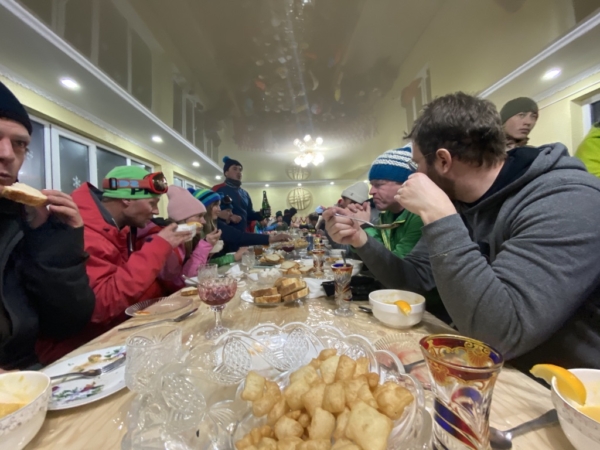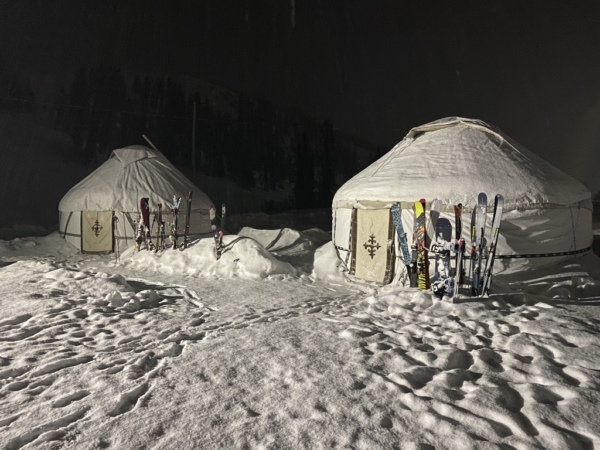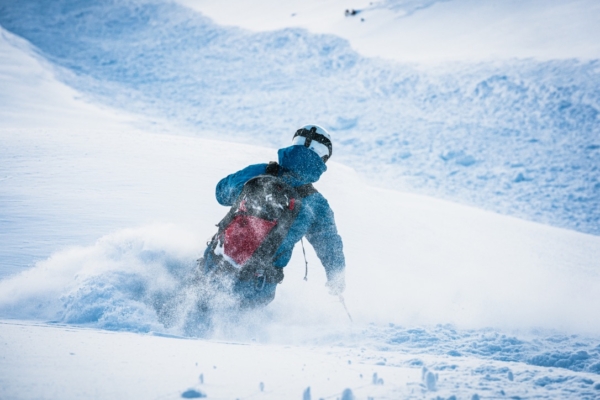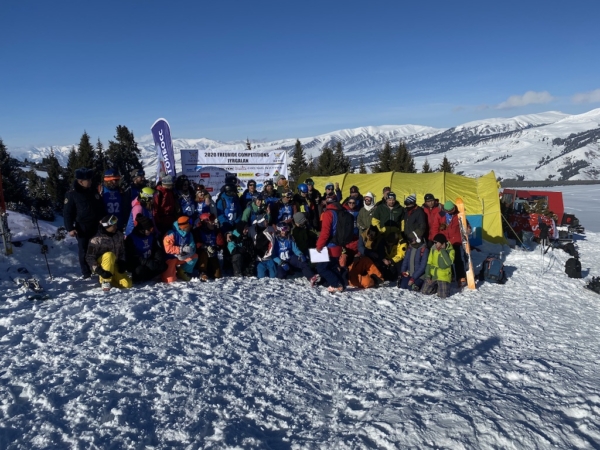Words and photos by guide Doug Bernard
Even after traveling for almost 72 hours across 11 time zones and knowing your ski bag is on an alternative flight plan somewhere in Europe, there is a certain excitement to landing in a new country in the middle of the night and wondering if the other guys you are supposed to meet here made their connections. Sometimes you just have to have faith that it’s all going to work out and go with the power of stoke and optimism in adventures.
In a lot of ways, I couldn’t believe that my trip to help with the Silk Road Freeride Tour in Kyrgyzstan was actually happening until I got on the plane in Sun Valley bound for Bishkek and then Karakol. It all started when my friend Stacy Bare called me up and asked if I wanted to come along—and if I could make it all happen in less than a month. Of course, I said YES and promptly set about expediting my passport renewal. I did some quick research to see where I had committed to going, and the mountains looked amazing!
Stacey Bare is a fellow veteran and the founder of Adventure Not War as well as the Afghan Ski Project, which bring skis to the Afghan skiers in Bamiyan. With the help of Olaf Sueters and Peter Hoffman, he was also organizing a Freeride event in Kyrgyzstan. Olaf runs an organization called Gear For Guides which is committed to providing opportunities for training and equipment for guides in emerging snowsports markets. Peter has an impressive travel network in Kyrgyzstan and other countries off the beaten path. Peter has built a crew of talented locals, who run the day to day operations in each of his destinations. Our final roster for the Freeride event included participants from Kyrgyzstan, Kazakhstan, Russia, Germany, Switzerland, Austria, Bosnia, Turkey, the United States, Belgium, and the Netherlands. Volkl professional freeride athlete, Ahmet Dahdali, helped with the judging. To capture the event on film photographers and cinematographers Yente Van Eynde, Louis Arevalo, and Hennie and Matt from Team Thirteen in Utah came along.
My role at the event was to help teach snow safety and mountain awareness to the participants and to work with local guides at the venue for snow safety. Heading over there I scoured the internet for information and meteorological data and came up with….nothing. The best I could do was look at forecasts for the area (of dubious accuracy) watch the webcams for Karakol Ski Base and the Jyrgalan Yurt camp to estimate snowfall and cloud cover.
The good news on arrival in Bishkek was that no one’s skis made it on the flight, so the pressure was off and I wouldn’t be “that guy” without his gear. Fortunately, Peter owns a ski shop with rentals in Karakol, so after a six-hour van ride to Karakol, we were lined up with rental gear to use for the first day as we waited for our skis to arrive. I wound up with a pair of 160cm carving skis and boots at least a size too big. I thought: “How bad could it be, what could go wrong? Skis are skis, I’ll be fine out there.”
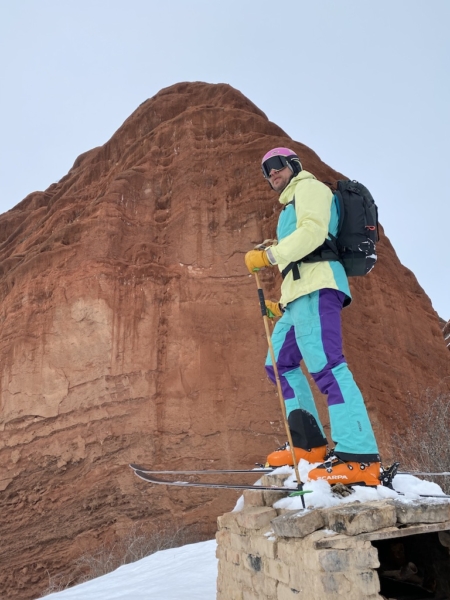 The next day we shuffled our plans around and some of the locals took over teaching the competitors snow assessment and companion rescue while I headed to Jyrgalan to finish selecting a suitable venue. An hour and a half van ride took us up to the Ryce Travel Yurt camp in Jyrgalan, and from there we hopped in a cat to drive up into the Alpine to start getting the venue ready. I spent the entire morning glued to the windows gawking at the mountains and taking picture after picture as each turn revealed a new set of peaks and slopes.
The next day we shuffled our plans around and some of the locals took over teaching the competitors snow assessment and companion rescue while I headed to Jyrgalan to finish selecting a suitable venue. An hour and a half van ride took us up to the Ryce Travel Yurt camp in Jyrgalan, and from there we hopped in a cat to drive up into the Alpine to start getting the venue ready. I spent the entire morning glued to the windows gawking at the mountains and taking picture after picture as each turn revealed a new set of peaks and slopes.
Once we reached the alpine, we realized that the upper elevation sites we had considered weren’t going to work. The snow had been blown off the slopes and the snowpack that remained was thin and faceted over sharp rocks. Moving lower we found a slope that would work, with good features and a slope for the beginner competition next to it. As we moved out to check the slope, I realized that skiing on 100cm of faceted snow on piste skis and ill fitting boots was going to be character building. After a long descent of practically walking and quite a few nosedives through the faceted snow, we made it down to the cat and headed back to the hotel. At least we had a venue selected. To my immense relief, my skis were waiting for me when I got back to Karakol so the next day was going to be much more enjoyable on my Wailer 110’s!
Working with a couple of local guides to set up the venue and check the snowpack around the area to assess stability, I was struck by how all the work I’ve put in, the education I pursued, and the help I’ve had from my friends, mentors, and teachers enabled me to head into an unknown zone with a new snowpack, and safely figure things out. The local guides were knowledgeable about their terrain, and keen to learn more, so we dug in the snow and found a variety of facets topped with windblown snow…for them it was normal and for me it was a great intro a new (and frightening) snowpack. In the end, we decided that the beginner venue was ready for skiing, but we need to spend a bit more time checking the expert venue to be confident of it for competition.
While we had been setting up the venue in Jyrgalan, the competitors were skiing at Karakol Ski Base in the mountains, 10 minutes from the town of Karakol. The chance for average skiers to ski with pros and experienced locals to ride with foreigners was unique and the energy of the participants was high! Arriving in Jyrgalan, competitors loaded the cat and the local slednecks showed up to help tow everyone to the venue. It quickly became clear that no matter where people were from, everyone loved to slide on soft snow! After a practice run, the beginners got to show off their skills and everyone came down with huge smiles on their faces. While they were practicing, I was looking at the expert venue and realized that there had been some new snow and wind was creating wind drifts at the top and middle of the slope. Selecting a slope of similar aspect and elevation as the venue, I ski cut the very upper portion as Ronnie (one of the expert competitors) spotted me, and it slid in the D1.5 range. Concerned, we headed down a safe ridgeline and back to the venue. Storing away this information, I headed down for the day and watched the beginners compete.
After the first day of competition, we spent the night in the Yurt camp, cozy in wool felt insulated yurts with heated floors. Because we were all staying at the same yurt camp, we gathered for a meal at one giant table and stories were told and retold of the day’s adventures as we all got to know each other. No matter where people were from or their ability level we were all one group of riders with a shared passion for snow.
The next morning, we woke to 10cm of new dry snow, and after a quick breakfast headed up to the venue and found the wind had moved the snow into drifts and wind slabs. We closed the planned approach to the venue due to loading from above and stalled for time by having everyone take a practice lap on the beginner terrain. As I skied up to the expert venue I realized that the windslab that had built up overnight was thicker than I had seen the day before.
Standing at the top of the expert slope with Ahmet, a film crew, and a field of strong skiers, who were semi-patiently waiting and practicing with the expectation to ski something steep and fun. I was definitely stretching my comfort zone having to help make a call like this, and feeling some of the pressure from a film crew and an athlete who had traveled a long way to get “the shot”. Looking at the slope carefully, I could see how to make a ski cut at the upper end of the windslab and wind up on a section I felt confident wouldn’t go. I pointed my skis, picked up speed and cut across the pillow of snow, making it to the safe zone. As I looked back, the entire slope had spidered with cracks and was sliding! Whoa. After watching the slope slide in a D2 size, we skied down a safe ridge and conferred with the locals. It was disappointing to have to tell them that I thought it was still too dangerous to ski. What followed was a conversation about risk and reward, but in the end, the locals made the right call. We ran the expert event on the beginner slope, had a great day, and walked away smiling…with plans to come back next year!
I am completely psyched to have been a part of this project! The chance to travel to new mountains and interact with other skiers and mountain people is one of the things that I love. The locals, who spearheaded the event, were over the top with enthusiasm to be able to share their home mountains with such a diverse group of talented riders. Pros and amateurs alike had a great time, and people who would never have thought of doing a freeride competition were able to test themselves and learn in an environment where the support and stoke raised their level each day. On top of all of these factors, to got to put my skills as an avalanche forecaster, educator with Sawtooth Mountain Guides and AIARE, to use in a new venue and pass along some knowledge was such an amazing opportunity. We started small this year, but are planning to grow the program in the next three years by adding a more robust mountain awareness program, an AIARE Companion Rescue Course, and AIARE Level 1, and an AIARE Level 2 course in upcoming years. The goal is to make the program sustainable over time, to develop athletes that could compete internationally, and to have local guides and competitors who can run the events all on their own as they pursue their own education and progression as mountain professionals. These objectives line extremely well with my desire to model and provide a path for veterans and others to pursue professions in snowsports, guiding, and outdoor recreation. After attending the event and spending some time in the ski community in Karakol and Jyrgalan, it is also clear to me that working with professionals in an emerging snow sports and tourism market can provide alternatives for employment to the traditional ones of the extraction industry that are common in the area.
